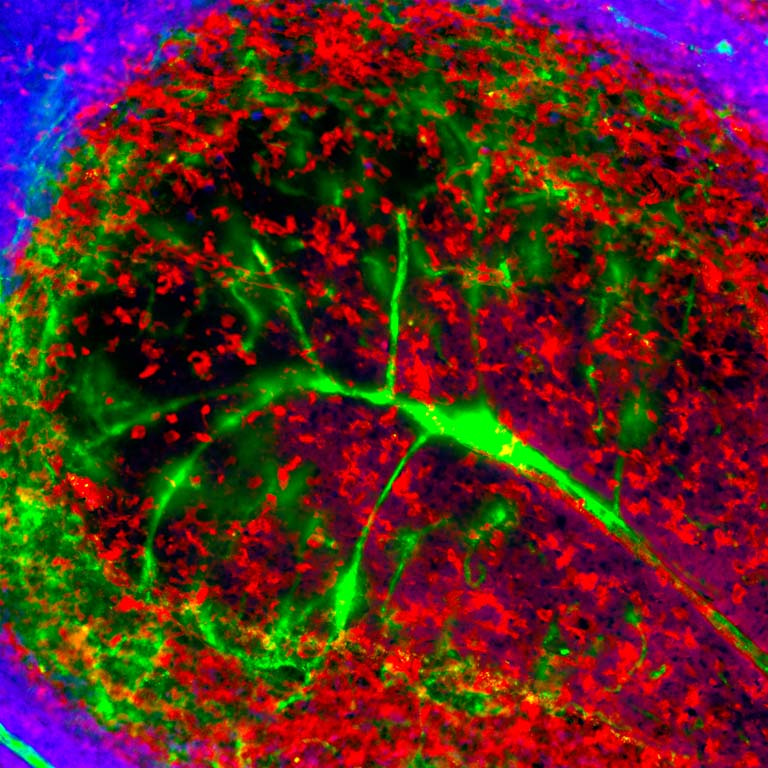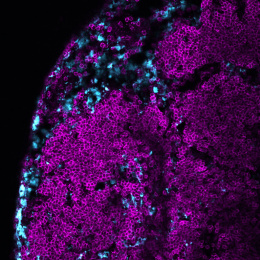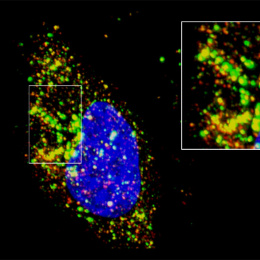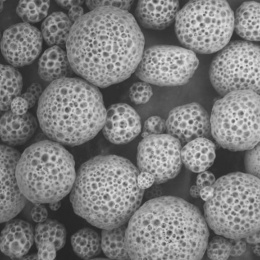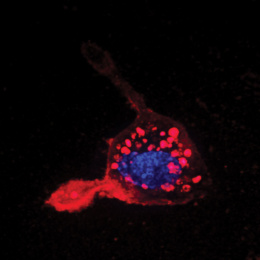Tree of Life: Crossing the Blood-Brain Barrier
Tree of Life: Crossing the Blood-Brain Barrier
Submitted by Emmanouil D. Karagiannis, Ahmed A. Eltoukhy, Robert Langer, and Daniel G. Anderson at the Koch Institute
Koch Institute at MIT, MIT Department of Chemical Engineering, Institute of Medical Engineering and Science
"Blood vessels within the cerebellum grooves, the dorsal region of the brain involved in motor control form tree like structures to effectively feed with nutrients and oxygen all of the neurons. Apparently the endothelial cells that compose these blood vessels are so tightly attached to each other that form a barrier, the Blood Brain Barrier, which prevents the transport of any large molecule, including many drugs, beyond this barrier. A milk derived peptide which carries a green fluorescent dye can attach on the surface of the endothelial cells lining the blood vessels, penetrate through the fine layer of these cells and make it to the other side; the space where neurons reside. The neurons are visualized with a red dye whereas the 'white matter' that surrounds them is stained with a blue dye. Such a peptide is extremely significant as it can be a vehicle for delivering drugs to the neurons to treat a variety of diseases like Alzheimer’s, Parkinson’s, and Multiple Sclerosis."
